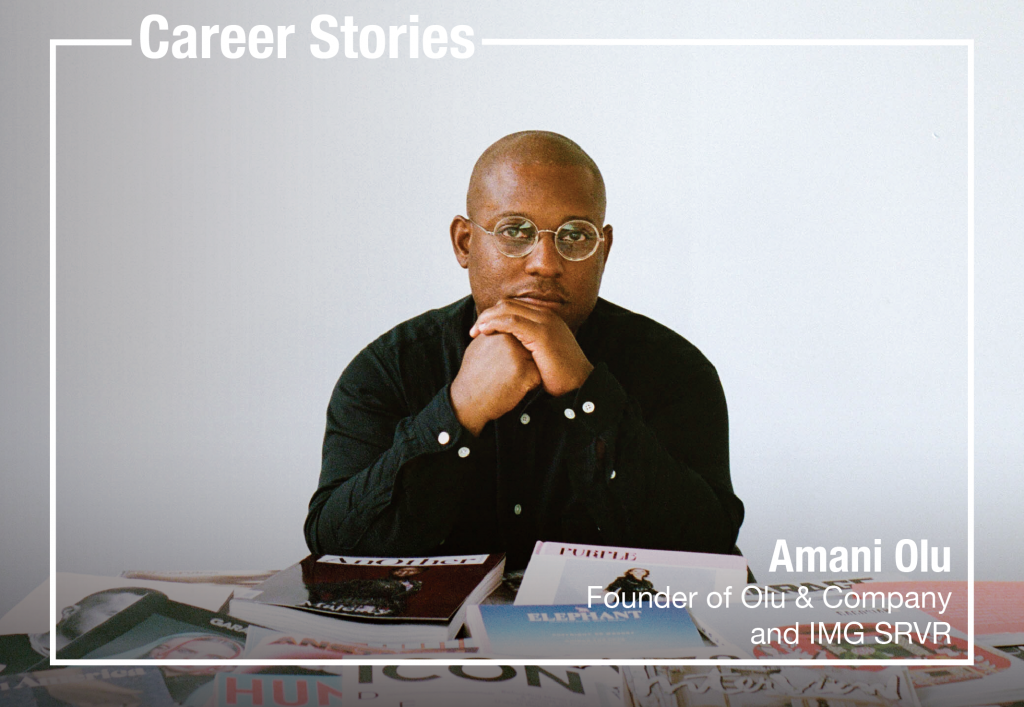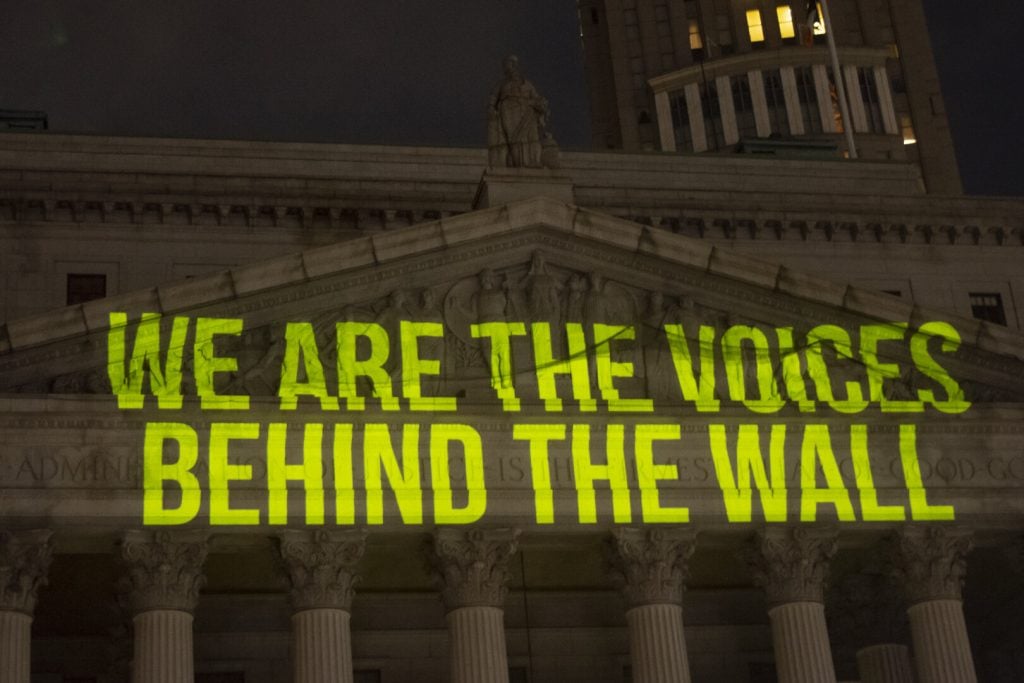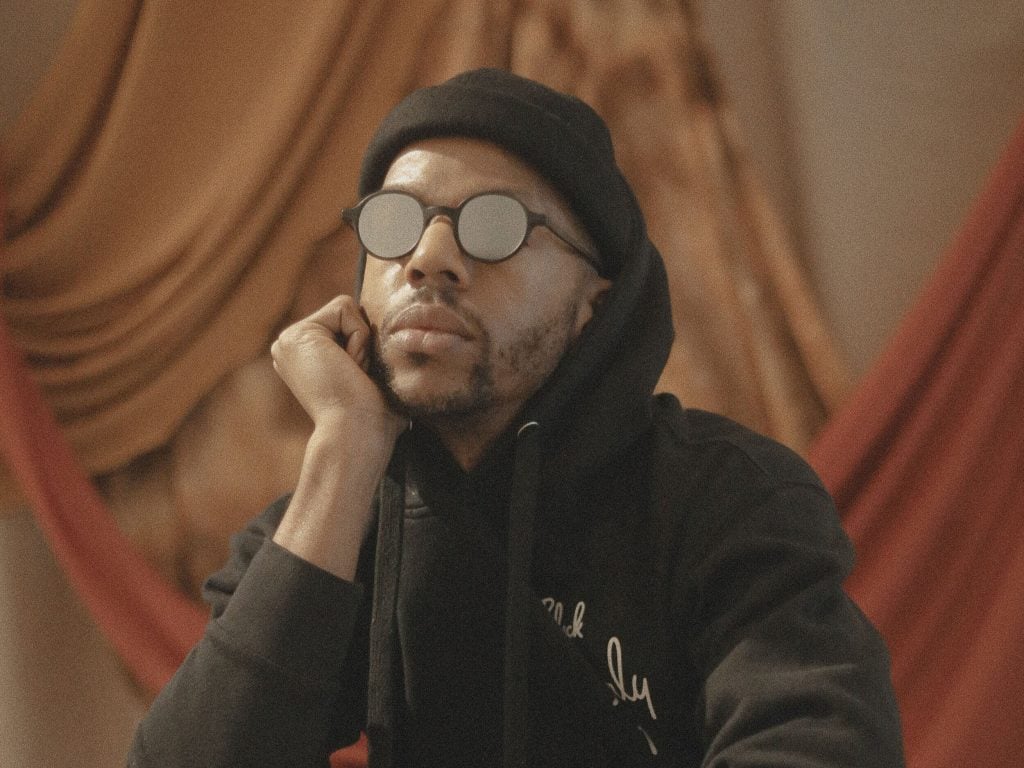Career Stories
Entrepreneur Amani Olu on Going From College Dropout to the Art World’s Go-To PR Guru
Olu shares his journey from professional breakdancer to publicist to cultural entrepreneur— and how he's making the products he wants to use.

Olu shares his journey from professional breakdancer to publicist to cultural entrepreneur— and how he's making the products he wants to use.

Katie Rothstein

No two paths to a successful career in the art world look the same. In our series “Career Stories,” we’re checking in with some of the high-powered people in the art industry to hear about everything from their first brushes with art to the advice they would give their younger selves.
Entrepreneur Amani Olu has revolutionized art-world marketing. By meeting his clients at the intersection of art, activism, and social justice, Amani and his team at Olu & Company, the marketing consultancy he founded, help individuals and organizations turn passion into action. Before finding his way to art-world entrepreneurship, Amani worked in the narrower, more staid field of public relations.
“That’s when things got real,” Olu says of his first PR gig back in 2010. “That’s when I thought to myself, ‘Oh, there’s levels to this.’” In addition to helming Olu & Company, Olu co-founded and leads a non-profit dedicated to supporting emerging photographers and recently entered the tech sphere with IMG SRVR, a new platform that aims to change the way the world shares images.
The serial entrepreneur took time out of his packed schedule to tell us how he got to where he is now—and how he gets it all done. Read on to find out what he uses to stay organized, why the founding of IMG SRVR has been a decade in the making, and how he cultivates motivation as a power multitasker.
How did you get here? What’s your background, and what drew you to work in arts and culture?
I was a student at Temple University majoring in English, but I felt it was too prescriptive. I wanted to be in the world already doing something. I was in school because I felt I was supposed to be. So in 2002, I dropped out. I first pursued professional breakdancing, but I also had a business sensibility so I was teaching dance on the side too. I started a website called b.informed (a play on b-boying) about dance and arts in Philly, and eventually turned it into a print magazine.
In 2005, I ceased publishing and moved to New York City. My first job in New York was as a photo editor at Shutterstock. While there, I met Jon Feinstein, and together we created Humble Arts Foundation. Looking back, I took on those opportunities because I was curious and just had ideas about how things should be done.

Olu & Company developed and executed a comprehensive media campaign for Incarceration Nations Network, raising their profile and promoting The Writing on the Wall, an installation they developed in collaboration with artist Hank Willis Thomas. Photo by Chemistry Creative.
Olu & Company is described as “a marketing and business consultancy for individuals and organizations at the intersections of art, design, activism and social justice.” What set you on the path to founding a company that would meet clients at those intersections?
It was not intentional. After I left Nadine Johnson & Associates [the public relations firm he joined in 2010], I thought I would open a gallery. That didn’t work out. Then I thought I’d be a magazine editor. That didn’t work out. My friend [writer] Ann Binlot told me one day back then—she probably doesn’t remember this—that I was a good publicist and that I should get back into it. After some thought, I decided to start my own agency.
Back then, I pretty much took any job I could get. I launched a few galleries that are revered today and only charged around $500 per month. The money was terrible, but I stayed with it. Over time, I was able to secure more clients and increase my retainers, and then, suddenly, the art world became fixated on Black art. When I started Olu & Company, we weren’t thinking of social justice initially—it wasn’t a “thing” in the art world. But in hindsight, everything was in place for social justice to be a thing.
When Black artists looked around, Olu & Company was the one of the only Black-led and operated PR firms working in the art world. They feared that white institutions would not understand their work and try to silence it, so they hired us to handle messaging, communications, and media outreach. From there, organizations and businesses followed suit and before I knew it, we found ourselves at these intersections. It took a bit of perseverance and the world changing. Not all of our clients are at this intersection, but many of them are. We felt positioning ourselves in this way could signal to prospective clients that we are socially conscious and serious about art. We’re flexible between these worlds and now they increasingly overlap. I’m also Black, so it was inevitable.
What is something you think people misunderstand about the business of art?
Many people don’t realize how high the cards are stacked against them in terms of succeeding in this business long-term. The game is literally designed for most people to fail. It could be 15 years before you find a consistent stride in this business. Does everyone have the patience and capacity to hold on for that long? That’s a question one should ask before deciding they want to be in this business.

Artist Dario Calmese, a client of Olu & Company, who became the first Black photographer to shoot a Vanity Fair cover when he took a portrait of Viola Davis for the September 2020 cover. Calmese worked with Amani and his team to help promote the moment from his perspective, and they developed a comprehensive media plan for him. Photo by Rikki Wright.
These days, you’re jumping into the technical side of things with the launch of IMG SRVR, an all-in-one media platform designed to make image sharing easy. How did you break into the tech world coming from a background in arts and culture?
It’s all connected. To be in tech doesn’t mean to be unconnected to everything else. When I worked at Nadine Johnson & Associates, the publicists kept a list—more like a book, really—of top-tier people and recorded when they were photographed at our events, especially with clients. We compiled this book the old-fashioned way, by printing pages and sharing it with the client. It was very time-consuming. I developed a software that cut the time down from four hours to 15 minutes. Back then, IMG SRVR was already percolating.
At Whitewall [magazine], I realized there was no easy way to upload, store, and share images among journalists and editors. We’d be ready to publish a story but have only low-resolution images, images with missing captions, or no images at all. So I designed a couple of different versions of a website to make it easier. To this day, when you share images with someone, you generally are sharing a Dropbox link and then a second document with captions, if at all, or maybe the captions are in the title of the image file. Either way, it is messy, and I’m too type A to live in a world like that, so I developed IMG SRVR as an all-in-one media center. We only use IMG SRVR at my company to share images with the press, and it should be on the market this fall for all to use.
As someone who was once dubbed “the king of multitasking,” how do you stay organized?
[Laughs] I use Calendly, Monday, Quickbooks, Bill.com, Slack, Gmail, Google Calendar, and pretty much any app that will aid in productivity.
And in the same vein—as the king of multitasking—how do you stay motivated?
My curiosity keeps me motivated. I am also motivated by the prospect of helping people solve problems. I was at a bar once, and a guy was lamenting how low his credit score was, and within minutes I had given him about five different strategies on how to improve his score within 90 days—lame, I know. And he was just so appreciative. I was able to help him solve a problem that he thought was impossible to solve. I guess it’s just who I am.
What is one piece of advice you would give to your younger self at the start of your career?
The answer is inside of you.